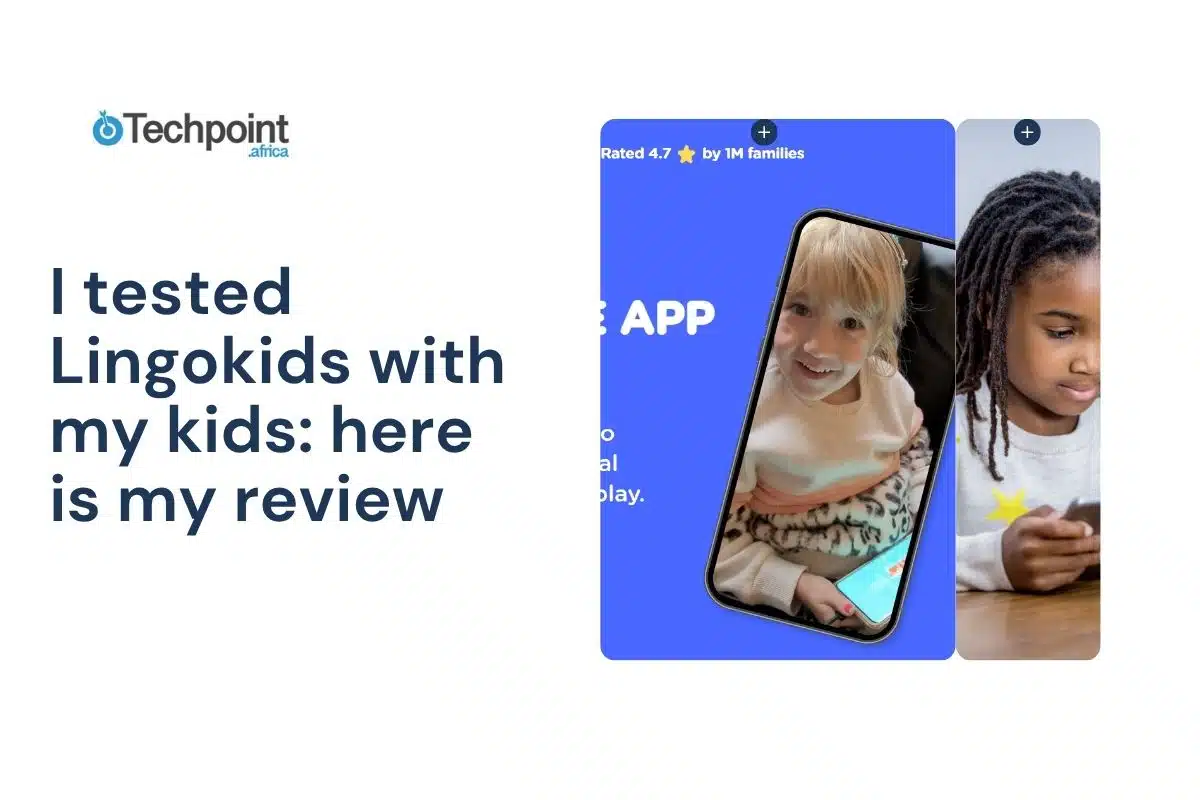I first discovered Lingokids while browsing parenting forums and reading about popular language-learning apps for young children. The promise of a safe, ad-free environment with content tailored specifically for early learners caught my attention. As a mother of two energetic little ones, ages four and six, educational tools that can keep them engaged while helping them learn are a priority.
One would think this shouldn’t be an issue. So many kiddie apps claim to be both fun and educational, but it’s really hard to know which ones truly deliver.
Since my children are at the perfect age to start building language skills, I decided to give Lingokids a chance. Was it something my kids actually enjoyed? Did it help them learn in a meaningful way? Well, read on to know all about it.
But, what is the Lingokids learning app?
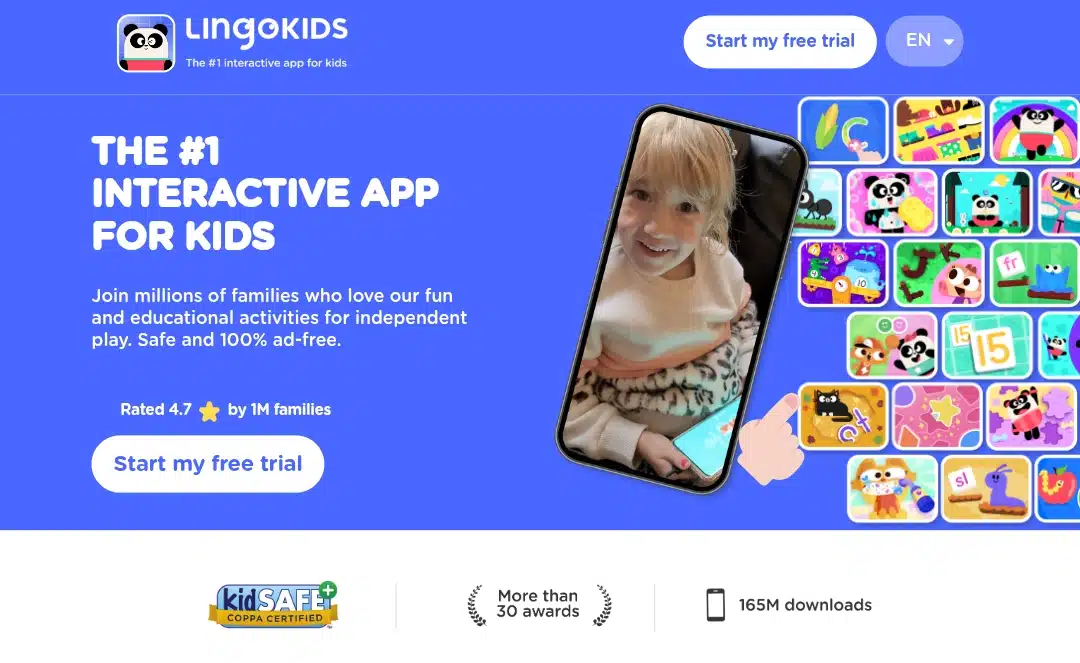
Lingokids is an educational app designed specifically for children aged 2 to 8, with a primary focus on teaching English through interactive and engaging content. Founder Cristobal Viedma founded the app in 2016 to offer a comprehensive curriculum that combines language learning with early childhood development skills, including vocabulary building, basic grammar, math concepts, social skills, and emotional intelligence. Its approach centers on play-based learning, using games, songs, videos, and interactive activities to make language acquisition enjoyable and effective for young learners.
The app’s content is carefully structured to adapt to each child’s age and skill level, ensuring that activities are developmentally appropriate and progressively challenging. Lingokids features a variety of mini-games that reinforce vocabulary and comprehension alongside music and animated videos that support auditory and visual learning styles. The app also encourages active participation, requiring children to speak, listen, and interact rather than passively watch.
Parents benefit from a dedicated dashboard that provides detailed progress reports and tools to customize the learning experience, such as setting screen time limits and selecting specific learning goals. Lingokids is available on multiple platforms, including iOS, Android, and web browsers, and maintains a safe, ad-free environment suitable for young children.
What features & content does Lingokids have?
Lingokids has a lineup of amazing features and content that work collaboratively to give more unique learning experiences. Read about them below:
Search and content anchors

At the top of the app, there’s a search bar inviting children to “Start your search in English,” encouraging exploration. Below it are six colorful anchor buttons labeled “Bathroom,” “Blippi,” “Runner,” “Math,” “Literacy,” and “Creativity.” These act as quick links to themed content areas, helping kids and parents easily navigate to specific topics or activities. This design supports intuitive use and lets children focus on subjects that interest them.
Core academic subjects

Lingokids organizes its educational content into three main subjects: Literacy, Math, and English. Each subject has a dedicated section filled with games and activities—201 for Literacy, 94 for Math, and 659 for English. These cover foundational skills like reading, counting, and vocabulary.
Progress bars show how much has been completed, motivating kids and helping parents track learning. The colorful characters and clear layout make these subjects inviting and easy to explore. Other subjects include Science, Technology, Engineering, Geography, Music, History, Art, Community, Social skills, Life skills, Critical thinking, and Environment.
Modern skills

The app also highlights “Modern Skills” through three categories: Citizenship, People Skills, and Creativity. These areas focus on social-emotional learning, community awareness, and creative expression. With 16, 37, and 48 activities, respectively, children can develop empathy, responsibility, and imagination. This section reflects Lingokids’ commitment to nurturing well-rounded learners beyond traditional academics.
English language learning paths

Your children will progress through structured English proficiency levels designed to match their developing skills. The A1 beginner path contains 409 activities focusing on basic vocabulary, simple phrases, and foundational grammar concepts. As they advance, the A2 intermediate level offers 319 activities with more complex sentence structures and expanded vocabulary.
For older children ready for greater challenges, the B1 level provides 257 advanced activities incorporating nuanced language skills and sophisticated communication patterns.
Age-appropriate activity groupings

The app thoughtfully segments content based on developmental stages. Toddlers aged 3 and under will engage with 312 specially designed activities featuring simple concepts, bright visuals, and basic interaction patterns. Children ages 4-5 can explore 474 activities that introduce more structured learning while maintaining playful elements. Older kids (6+) will tackle 295 activities that bridge toward formal educational concepts while preserving the engaging, game-based approach.
Diverse activity types

Three distinct activity categories cater to different learning preferences and engagement styles. “Play Together” mode offers 83 collaborative activities encouraging family participation and social learning experiences. “Play with Blippi” presents 15 activities featuring the popular children’s character, combining entertainment with educational content.
The Podcast section provides 28 audio-based learning experiences, perfect for developing listening skills and comprehension abilities during quiet time or travel.
Multilingual expansion options

Beyond English, your children can explore additional languages through dedicated learning paths. French (Français) offers 12 introductory activities, while German (Deutsch) provides 8 foundational lessons. For families interested in Asian languages, Indonesian (Bahasa Indonesia) includes 7 starter activities, broadening cultural awareness alongside linguistic development.
Neurodiversity-inclusive content

Lingokids demonstrates a commitment to inclusive learning through specialized content paths. Children with autism can access 81 activities developed in partnership with The Autism Café, ensuring appropriate pacing and sensory considerations. The ADHD-focused section contains 108 activities designed to accommodate shorter attention spans and movement needs. 140 dyslexia-friendly activities incorporate visual and auditory supports, making reading and language acquisition more accessible. Additionally, Dyscalculia housed 60 activities.
Academic learning paths

The app seamlessly blends language learning with core academic subjects. Preschool-level content features 173 activities introducing letters, numbers, and basic concepts through English instruction. Kindergarten students will encounter 211 activities that align with early elementary curricula while reinforcing English skills. First-grade content provides 157 activities that support reading readiness, mathematical concepts, and scientific exploration, all delivered through English-language instruction.
Each feature works synergistically to create a comprehensive learning environment where English acquisition happens naturally through play, exploration, and age-appropriate challenges. The visual progress tracking helps children see their advancement through numbered completion indicators, fostering motivation and celebrating achievements along their learning journey.
How the learning experience went down on Lingokids
I began my Lingokids journey by downloading the app, which is conveniently available both on iOS devices through the App Store and as a web version accessible via browsers. This flexibility means you can use Lingokids on an iPhone, iPad, or simply through a computer, making it accessible no matter what device you prefer. The app’s download and installation process was quick and straightforward, setting a positive tone right from the start.
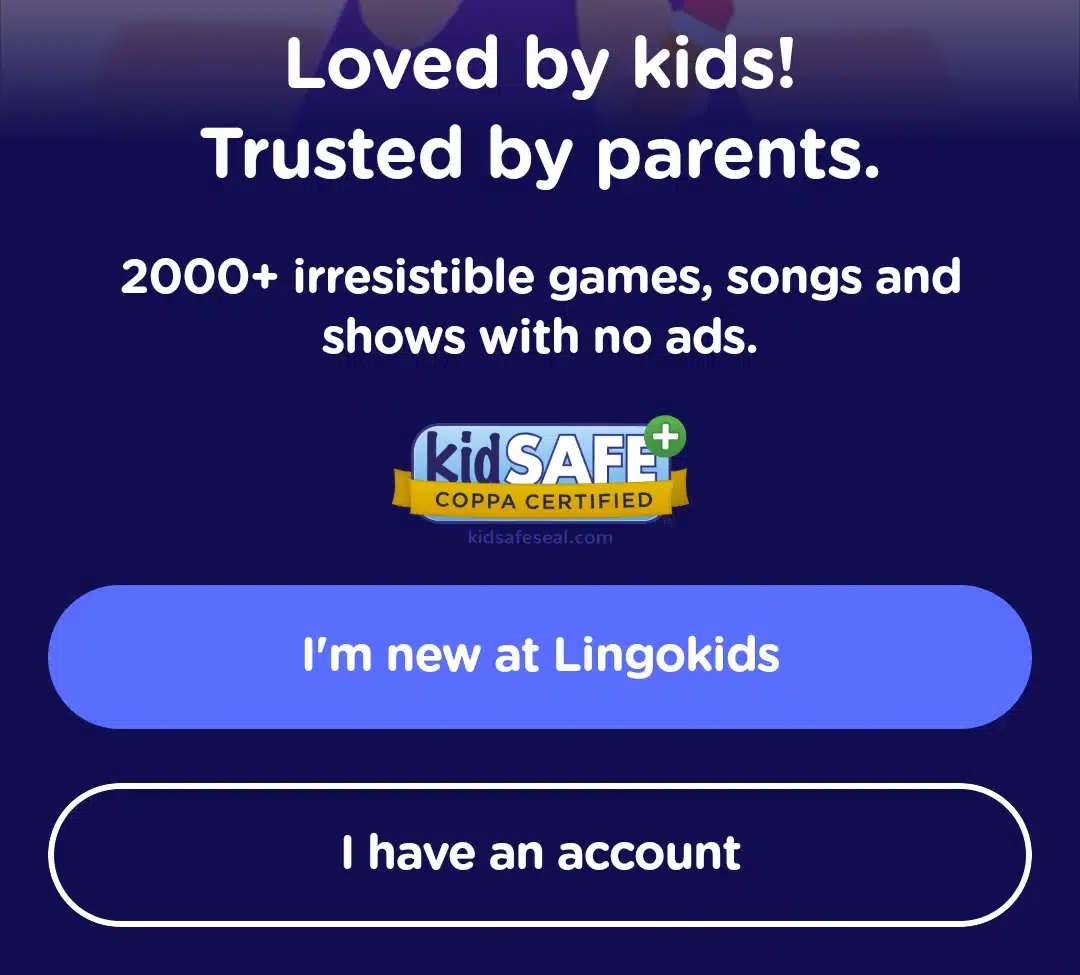
Once I opened the app, I was shown two clear options, which were whether I was new at Lingokids or already had an account. Since I was new to the app, I tapped on the option indicating that I was a new user. This choice guided me through the initial setup process, helping me create a personalized experience tailored to my child’s learning needs.
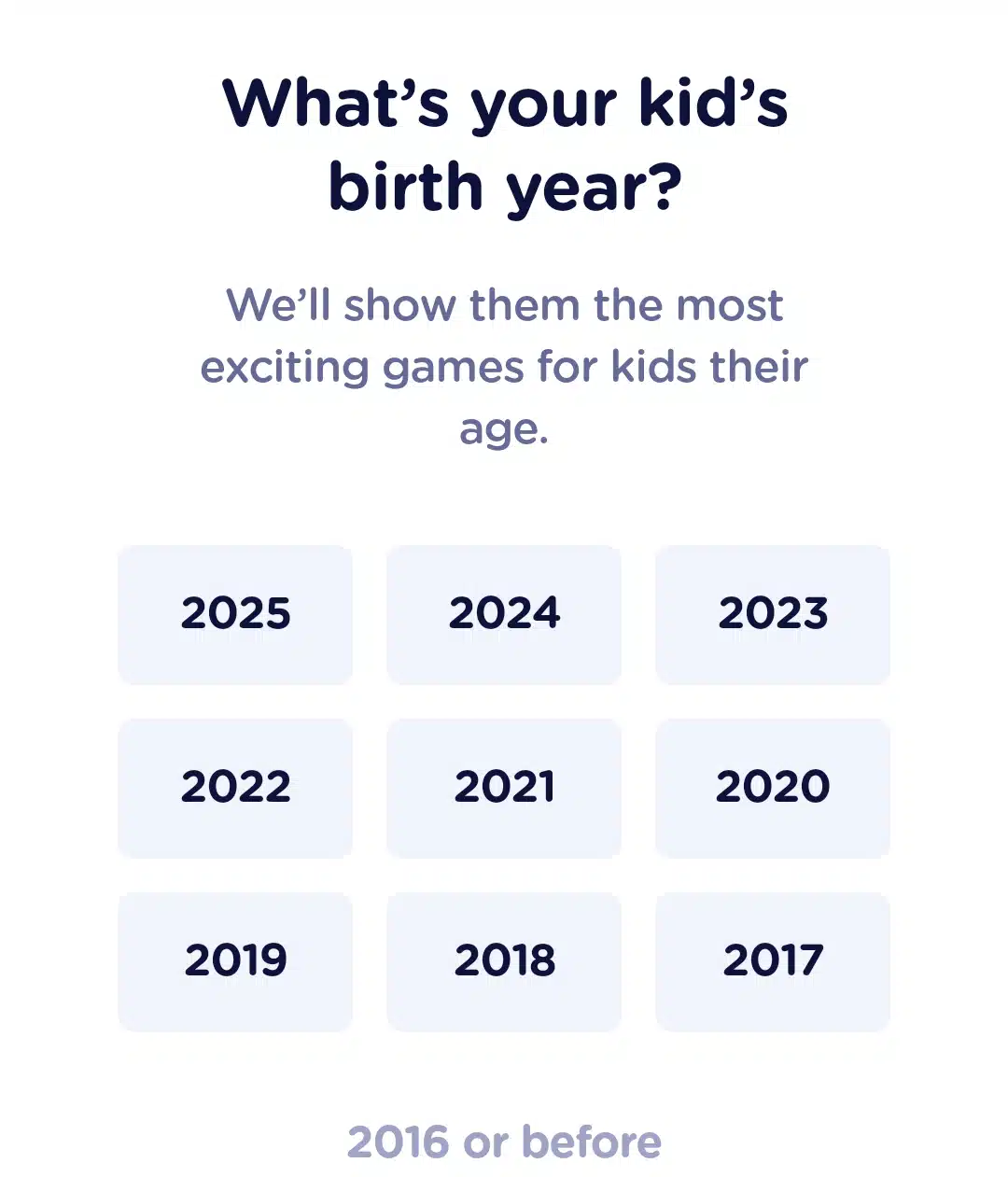
Next, I was asked to select my child’s birth year, which I set as 2019. This step is important because Lingokids customizes the learning experience based on the child’s age, ensuring the content is developmentally appropriate. However, I noticed that there was no option to add a second child at this point. I wondered if it might be possible to have multiple children under one account, so I explored further after logging in.
Indeed, Lingokids does allow multiple child profiles within a single subscription, but this feature is accessible only after signing in and setting up the primary profile. This means parents can manage and switch between profiles for siblings, making it a practical solution for families with more than one child.
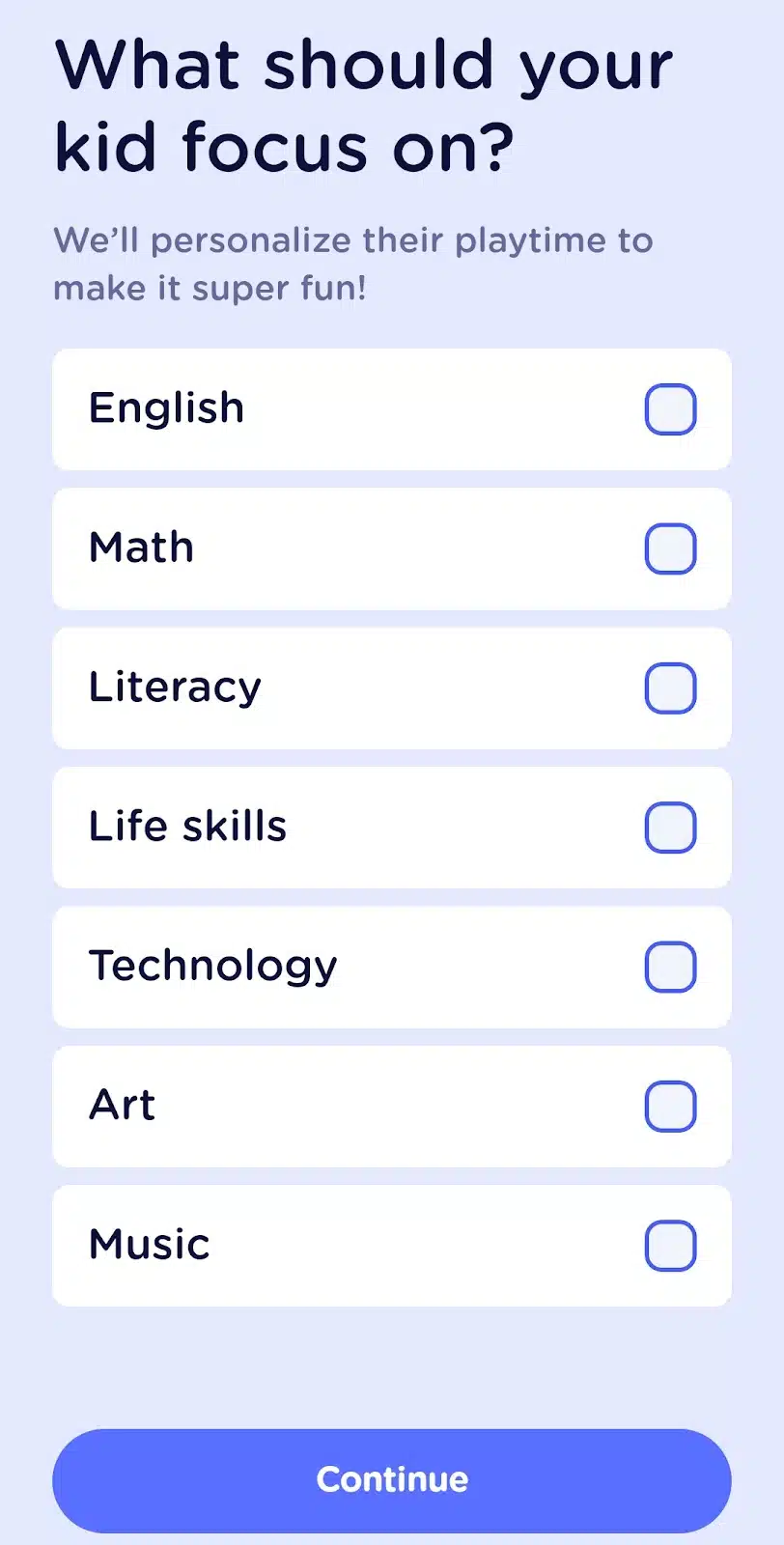
After selecting the child’s birth year, the app asked what my child’s learning focus would be. I chose English, aligning with my goal of helping my child develop strong language skills. This customization helps Lingokids tailor content and activities to specific learning objectives, whether it’s language acquisition, math, creativity, or social skills.
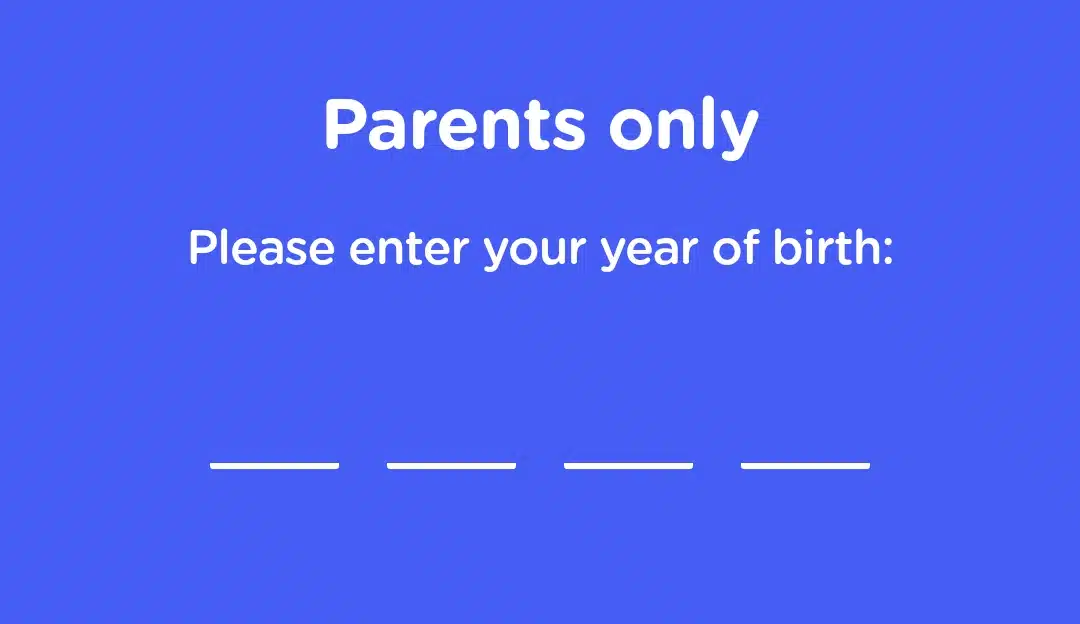
Interestingly, the app then requested my year of birth before granting access. This additional step seems designed to verify the parent or guardian’s age, ensuring compliance with online safety regulations. What stood out was that no password was required to log in, making the sign-in process incredibly quick and user-friendly. This approach reduces friction, especially for busy parents who want to get their kids started without delays.
With the account set up, I was ready to explore the app’s features and see how they would support my child’s learning experience.
After completing the sign-in process and setting up my child’s profile, I was eager to see how Lingokids would support real learning at home. Over several weeks of regular use, I began to notice meaningful changes in both my children’s engagement and language skills.
One of the first things that stood out was how quickly my six-year-old started using English phrases from Lingokids in our daily conversations. The app’s mix of interactive games, songs, and videos didn’t just keep her entertained, it actually encouraged her to try out new words and expressions with confidence. For example, after playing a vocabulary game about colors and objects, she began naming items around the house in English, sometimes even correcting herself or her younger sibling with a smile. This kind of spontaneous language use was new for us and showed me that the app’s immersive approach was working.
On the other hand, my four-year-old was drawn to the more visual and hands-on activities. He especially enjoyed the games that involved matching words to pictures and repeating simple phrases. Over time, I noticed a steady improvement in his ability to recognize basic words and colors. He would often point to objects in his picture books and proudly say their names in English, something he hadn’t done before we started using Lingokids.
What surprised me most was how engaged both kids remained. Unlike some educational apps that lose their appeal after a few days, Lingokids kept their attention longer than expected. There were days when they actually asked to play more, eager to unlock new games or revisit their favorite activities. The app’s use of bright visuals, friendly characters, and a playful rewards system clearly made learning feel like a game, something both kids looked forward to rather than a chore.
The learning path feature was especially helpful. Activities were organized in a way that gradually allowed my children to build confidence. My six-year-old started with simple vocabulary and, over time, moved on to form basic sentences. The app provided immediate feedback, celebrating correct answers with cheerful animations and gently encouraging retries when mistakes were made. This positive reinforcement helped both kids feel successful and motivated to keep going.
I also appreciated how Lingokids balanced screen time with suggestions for offline activities. The app often recommended family projects, like scavenger hunts or simple crafts, that extended the learning experience beyond the device. These activities allowed us to practice new vocabulary together and made learning English a shared family adventure.
From a parent’s perspective, the reporting and progress tracking tools were invaluable. I could easily check which activities my children had completed, see how much time they spent learning, and spot areas where they might need extra support. This transparency helped me stay involved and tailor our learning goals as needed.
Parental controls & reporting
Lingokids offers comprehensive parental controls and reporting features designed to help parents manage their child’s learning experience and screen time effectively. One key tool is the ability to set screen time limits directly within the app. Parents can specify how many minutes their child is allowed to use Lingokids each day based on recommended guidelines or personal preferences.
When the allotted time ends, the app notifies the child and blocks further play, though parents can add more time if desired. This feature helps families regulate screen time in a way that supports healthy digital habits.
Beyond screen time management, Lingokids provides a detailed parent dashboard where adults can monitor their child’s progress. Using artificial intelligence, the app generates regular reports that show which activities the child has completed, how much time they have spent learning, and areas where they might need more practice. This insight allows parents to stay actively involved in their child’s education and tailor the learning experience to their needs.
Lingokids also encourages parent involvement beyond the screen by offering off-device activity ideas, parenting tips, and educational resources developed by their team. These include fun family activities like scavenger hunts and kid-friendly recipes designed to extend learning into everyday life. This holistic approach helps parents meaningfully engage with their children’s development.
In all, Lingokids’ parental controls and reporting tools provide a safe, manageable, and interactive environment for children’s learning. Parents can confidently balance screen time with offline activities while tracking progress to support their child’s growth.
Lingokids pros & cons
Pros
Engaging and varied content
As I explored Lingokids, I was impressed by the wide variety of activities, games, and videos available. The content is thoughtfully designed to appeal to children across different age groups and learning styles. This diversity keeps the learning experience fresh and exciting, helping maintain my child’s interest over time. It also allows kids to develop multiple skills simultaneously, from language and literacy to creativity and social-emotional learning.
User-friendly interface
One of the first things I noticed was how easy the app is to navigate. The colorful, intuitive design with large buttons and clear icons makes it accessible even for young children. My child was able to explore independently without much assistance, which encouraged confidence and made learning feel like a fun game rather than a chore. This simplicity is a significant advantage for parents who want a hassle-free educational tool.
Safe, ad-free environment
Safety is always a top concern with children’s apps, and Lingokids delivers on this front. The app is completely ad-free, so my child wasn’t exposed to distracting or inappropriate advertisements. This creates a secure and focused learning space where kids can explore without interruptions. Knowing this gave me peace of mind and made me comfortable letting my child use the app unsupervised.
Detailed parental controls and progress tracking
Lingokids offers a comprehensive parent dashboard that allows me to easily monitor my child’s progress. I could see which activities they completed and how much time they spent learning. The app also lets parents set goals and customize the experience, which helps tailor the content to each child’s needs. This level of control and insight made me feel more involved and confident in supporting my child’s learning journey.
Regular content updates
The app doesn’t feel static or outdated because new games and activities are added regularly. This commitment to fresh content keeps the experience engaging and shows that the developers actively improve the app based on user feedback. It’s reassuring to know that Lingokids continues to evolve, offering new learning opportunities over time.
Cons
Subscription cost is relatively high
While Lingokids offers excellent content, I found the subscription price to be higher than some other educational apps. Although the quality and breadth of activities justify part of the cost, the monthly or annual fee might be a barrier for families on a tight budget. It’s important to consider whether the investment aligns with your family’s needs and priorities.
Some games can become repetitive
Despite the variety, I noticed that certain games and activities repeat in format or content enough that my child occasionally lost interest. This repetition might reduce engagement over time for children who thrive on constant novelty. It’s something to remember if your child frequently prefers new challenges or gets bored easily.
Content may be less challenging for children over the age of 7
Lingokids clearly targets younger learners, focusing on foundational skills. While this works well for preschoolers and early elementary children, I found that the content might not be sufficiently challenging for kids older than seven. For families with older children, the app may not fully meet their educational needs as their skills advance.
The free version is limited in scope
The free plan provides only a small selection of activities, which limits how much children can explore without subscribing. While this is common among educational apps, it means you can’t fully assess Lingokids’ value without committing to a paid plan. Parents should be aware that the free version is more of a trial than a full learning experience.
How Lingokids grades their subscription plans
Lingokids offers a 7-day free trial for new users who choose either the monthly or annual paid plans. Subscriptions automatically renew but can be canceled at any time before the renewal date to avoid further charges. The Family Plan is not a separate subscription option; instead, it refers to the ability to add multiple children under a single paid subscription. Also, pricing may vary slightly depending on your country or ongoing promotional offers. Peep at plans and costs below:
| Plan Type | Price | Features Included |
| Free Plan | $0 | Limited access to activities and games, basic features, ad-free, safe for kids |
| Monthly Plan | $13.49 per month | Full access to all games, activities, learning paths, and progress tracking |
| Annual Plan | $71.88 per year (billed as $5.99/month) | Full access to all content, activities, and premium features; best value (save 60% vs. monthly) |
| Family Sharing | Included in paid plans | Multiple child profiles, parental controls, and progress reports |
Final verdict & recommendation
Having thoroughly used Lingokids, I can pointly affirm it is a well-designed educational app that effectively combines fun and learning for young children. Its engaging content, user-friendly interface, and strong parental controls make it an excellent choice for families seeking to support early language development and foundational skills in a safe, ad-free environment. The app’s tailored learning paths and positive reinforcement help children build confidence and stay motivated, turning screen time into productive learning sessions.
However, the subscription cost is on the higher side, which may not fit every family’s budget. Additionally, while Lingokids excels with younger children, its content may not fully challenge kids older than seven. The free version offers limited access, so a paid plan is necessary to unlock the full benefits.
I would recommend Lingokids for parents of preschoolers and early elementary children who want a comprehensive, interactive, and safe platform to nurture their child’s English skills and general learning. Its ability to manage multiple child profiles under one account adds flexibility for families with siblings.
If you’re looking for an app that balances educational value with engaging gameplay and parental oversight, Lingokids is definitely worth considering.

